From the Trenches
Spring Boards
By MARLEY BROWN
Monday, June 10, 2019
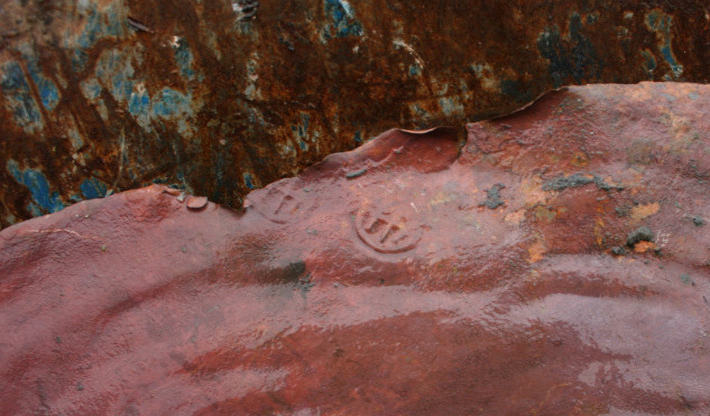 A modern shipping accident off the coast of the Netherlands led to the discovery of a sixteenth-century shipwreck that may provide insight into a transitional period in the history of global exploration and commerce. Salvagers attempting to retrieve 300 shipping containers that had fallen into the North Sea from the merchant ship MSC Zoe during a storm in January 2019 also recovered three wooden planks and 12 timbers from a much older ship’s frame, as well as a cargo of copper plates. Upon examination, the plates were found to bear the crest of the German Fugger family, one of early modern Europe’s wealthiest banking families. Analysis of the wood has established that the ship was built in the late 1530s. The vessel sank sometime before 1545.
A modern shipping accident off the coast of the Netherlands led to the discovery of a sixteenth-century shipwreck that may provide insight into a transitional period in the history of global exploration and commerce. Salvagers attempting to retrieve 300 shipping containers that had fallen into the North Sea from the merchant ship MSC Zoe during a storm in January 2019 also recovered three wooden planks and 12 timbers from a much older ship’s frame, as well as a cargo of copper plates. Upon examination, the plates were found to bear the crest of the German Fugger family, one of early modern Europe’s wealthiest banking families. Analysis of the wood has established that the ship was built in the late 1530s. The vessel sank sometime before 1545.
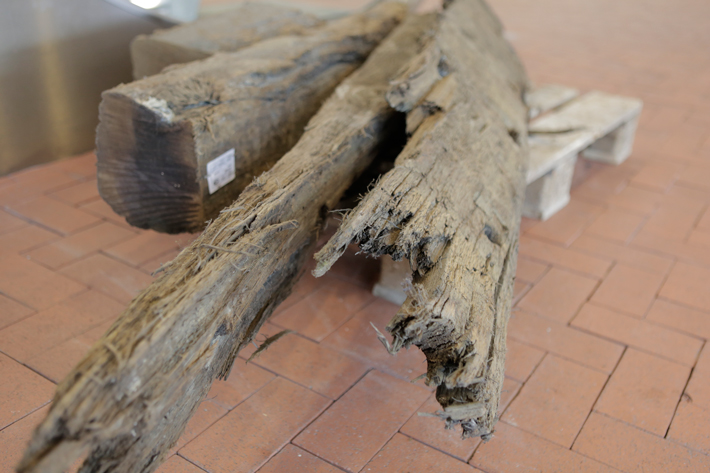 Underwater archaeologist Martijn Manders of Leiden University and the Cultural Heritage Agency of the Netherlands says the wreck represents a pivotal moment in Dutch shipbuilding. It is a very early example of the carvel method of building hulls, in which planks are laid flush from edge to edge. This is distinct from the traditional lapstrake method, in which hull planks overlap. According to Manders, this development went on to allow for construction of sturdier three-masted boats with much larger crew and cargo capacities. “It’s a very important ship because 100 years later we’re in the middle of the Dutch Golden Age,” he says, “when three-masted vessels carrying hundreds of people are traveling regularly to the East Indies and the West Indies and circumnavigating the globe.”
Underwater archaeologist Martijn Manders of Leiden University and the Cultural Heritage Agency of the Netherlands says the wreck represents a pivotal moment in Dutch shipbuilding. It is a very early example of the carvel method of building hulls, in which planks are laid flush from edge to edge. This is distinct from the traditional lapstrake method, in which hull planks overlap. According to Manders, this development went on to allow for construction of sturdier three-masted boats with much larger crew and cargo capacities. “It’s a very important ship because 100 years later we’re in the middle of the Dutch Golden Age,” he says, “when three-masted vessels carrying hundreds of people are traveling regularly to the East Indies and the West Indies and circumnavigating the globe.”
Neanderthal Fashion Statement
By ZACH ZORICH
Monday, June 10, 2019

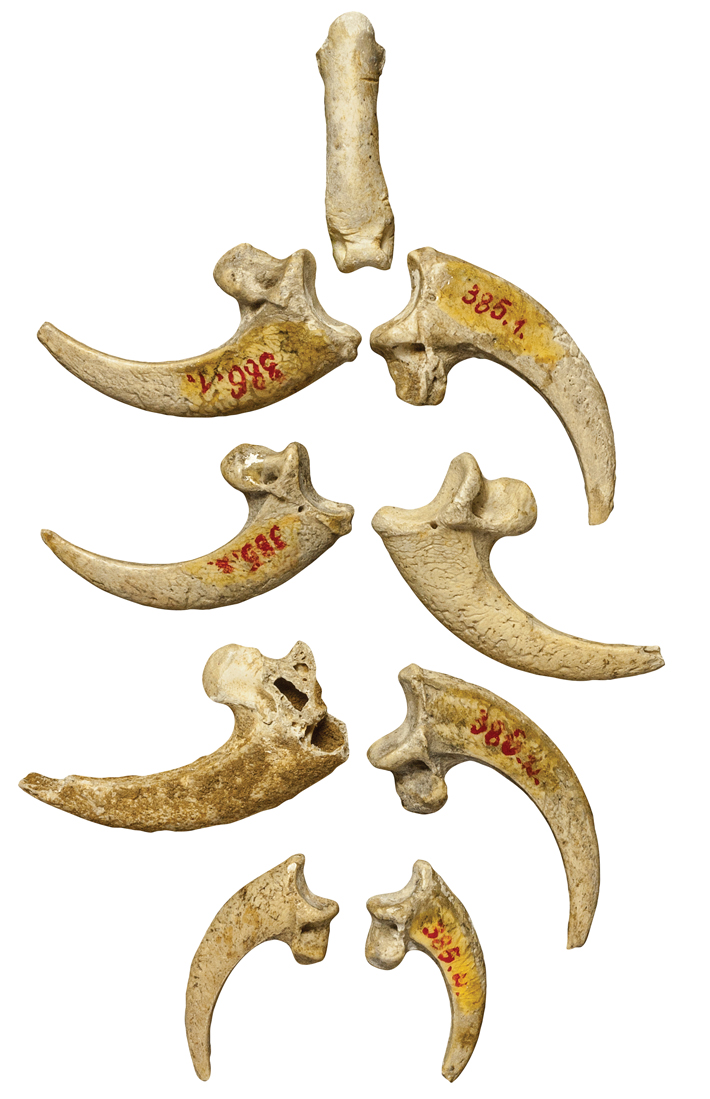 The size and power of golden eagles have made these raptors potent symbols in modern human cultures around the world, but a new analysis of eagle bones found at sites across Europe and Asia shows they played an important role for Neanderthals as well. Researchers compiled data on bird bones found at 154 Neanderthal sites dating to as early as 130,000 years ago. The results show that, before they made contact with Homo sapiens, Neanderthals across Eurasia were hunting golden eagles and using parts of their carcasses, mainly the talons, as jewelry or other kinds of symbolic artifacts.
The size and power of golden eagles have made these raptors potent symbols in modern human cultures around the world, but a new analysis of eagle bones found at sites across Europe and Asia shows they played an important role for Neanderthals as well. Researchers compiled data on bird bones found at 154 Neanderthal sites dating to as early as 130,000 years ago. The results show that, before they made contact with Homo sapiens, Neanderthals across Eurasia were hunting golden eagles and using parts of their carcasses, mainly the talons, as jewelry or other kinds of symbolic artifacts.
The findings run counter to the widely accepted idea that Neanderthals were big-game hunters who couldn’t adapt to hunting smaller, faster prey, such as eagles, when bigger, slower species, such as elk and bison, were dying out. They also suggest that, independent of modern humans, Neanderthals were developing symbolic thinking alongside new techniques for exploiting a wider variety of resources, including birds. According to Stewart Finlayson, director of natural history at the Gibraltar National Museum, the findings show just how sophisticated Neanderthals were.
Animal Archaeology
By DANIEL WEISS
Monday, June 10, 2019
 Several of the sea otters that frequent Bennett Slough Culverts at Moss Landing in central California are in the habit of smashing mussels on waterside boulders to extract their meat. An interdisciplinary team of researchers has identified telltale evidence of this behavior, including visible patches of wear on points and ridges of the rocks facing the water, as well as a distinctive breakage pattern in the shells, with the left side intact and the right side broken in half diagonally. Underwater middens at the site are estimated to contain tens to hundreds of thousands of similarly smashed shells. Natalie Uomini, an archaeologist at the Max Planck Institute for the Science of Human History, says this type of research shows a new way to apply archaeological methodology to animal behavior. “Archaeology is a set of tools that allow us to study past behavior,” she says. “But there’s nothing inherent about it that says it has to be used on humans.”
Several of the sea otters that frequent Bennett Slough Culverts at Moss Landing in central California are in the habit of smashing mussels on waterside boulders to extract their meat. An interdisciplinary team of researchers has identified telltale evidence of this behavior, including visible patches of wear on points and ridges of the rocks facing the water, as well as a distinctive breakage pattern in the shells, with the left side intact and the right side broken in half diagonally. Underwater middens at the site are estimated to contain tens to hundreds of thousands of similarly smashed shells. Natalie Uomini, an archaeologist at the Max Planck Institute for the Science of Human History, says this type of research shows a new way to apply archaeological methodology to animal behavior. “Archaeology is a set of tools that allow us to study past behavior,” she says. “But there’s nothing inherent about it that says it has to be used on humans.”
The Unseen Mummy Chamber
By JESS ROMEO
Monday, June 10, 2019
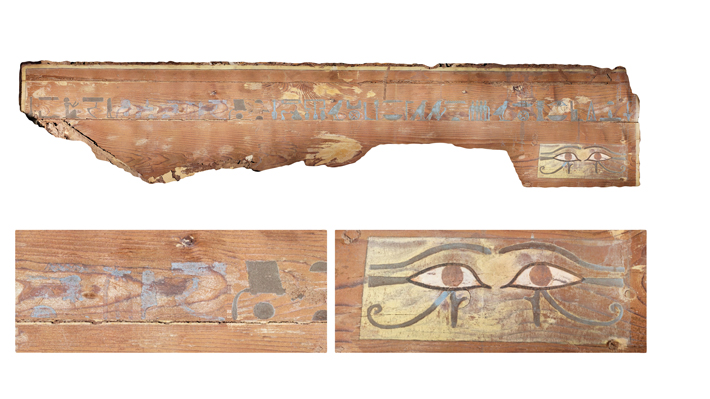 Near the end of the dig season at a necropolis on the western bank of the Nile in Aswan, Egypt, a team led by Antonio Mozas-Calvache of the University of Jaen discovered a tomb with an unopened coffin visible inside. The approximately two-by-eight-foot chamber was largely closed off and its entrance far too narrow for the archaeologists to squeeze through. These limitations forced Mozas-Calvache and his team to improvise. They mounted a remote-controlled camera at the end of a 12-foot-long pole, pushed it inside the chamber, and used it to photograph the contents.
Near the end of the dig season at a necropolis on the western bank of the Nile in Aswan, Egypt, a team led by Antonio Mozas-Calvache of the University of Jaen discovered a tomb with an unopened coffin visible inside. The approximately two-by-eight-foot chamber was largely closed off and its entrance far too narrow for the archaeologists to squeeze through. These limitations forced Mozas-Calvache and his team to improvise. They mounted a remote-controlled camera at the end of a 12-foot-long pole, pushed it inside the chamber, and used it to photograph the contents.
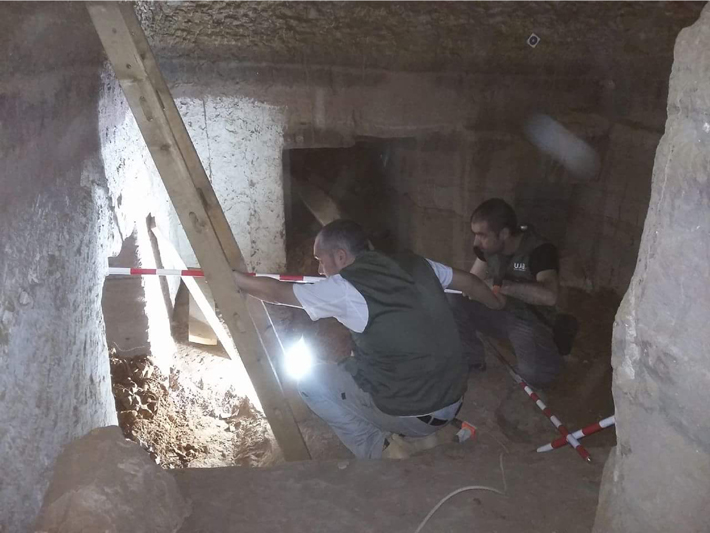 The team used the images to generate 3-D models of the tomb, including a detailed representation of the 3,800-year-old coffin. They were able to read hieroglyphs on the coffin, which revealed the mummy’s identity to be Shemai, a previously unknown brother of late 12th Dynasty (ca. 1981–1802 B.C.) governor Sarenput II. Given advances in technology, says Mozas-Calvache, “I think that our work would have been impossible to carry out 10 years ago.”
The team used the images to generate 3-D models of the tomb, including a detailed representation of the 3,800-year-old coffin. They were able to read hieroglyphs on the coffin, which revealed the mummy’s identity to be Shemai, a previously unknown brother of late 12th Dynasty (ca. 1981–1802 B.C.) governor Sarenput II. Given advances in technology, says Mozas-Calvache, “I think that our work would have been impossible to carry out 10 years ago.”
Click below to see a 3-D model of the coffin.
Cotton Mill, Prison, Main Street
By DANIEL WEISS
Monday, June 10, 2019
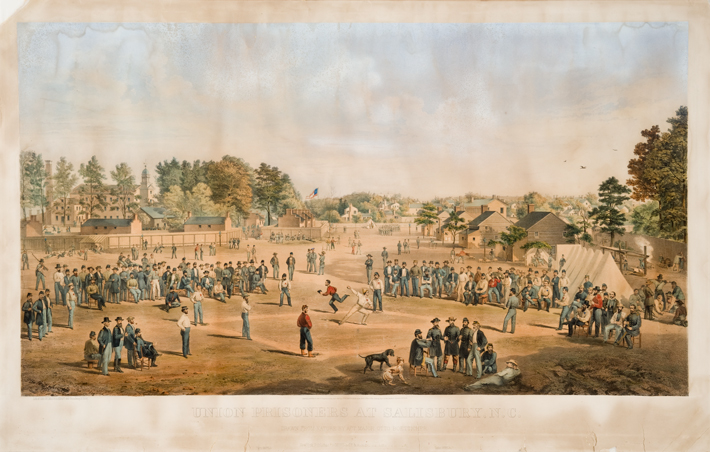
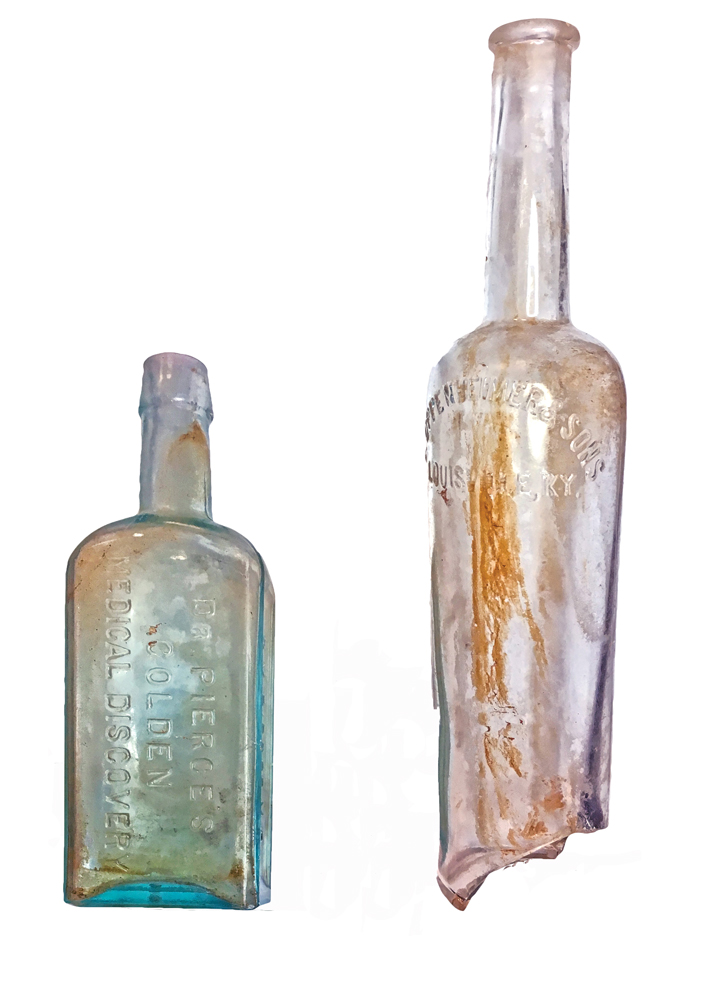 Remnants of the foundation of a former cotton mill that later served as the main barracks for a Confederate prison in Salisbury, North Carolina, were unearthed during a recent excavation. The prison, which opened in late 1861, was known as a relatively pleasant spot in its early years, with recreational activities including baseball games that may have matched prisoners against guards. By late 1864, however, its prisoner population had swelled to 10,000—four times the number the entire complex was designed to hold. Many prisoners took up residence in the yard, where they dug sleeping holes and, in some cases, escape tunnels. Thousands died of disease or were gunned down by guards in response to uprisings. The prison was abandoned near the end of the Civil War, and Union troops destroyed its buildings, whose bricks were later harvested, sold, and used to construct many of the structures that now line Salisbury’s Main Street.
Remnants of the foundation of a former cotton mill that later served as the main barracks for a Confederate prison in Salisbury, North Carolina, were unearthed during a recent excavation. The prison, which opened in late 1861, was known as a relatively pleasant spot in its early years, with recreational activities including baseball games that may have matched prisoners against guards. By late 1864, however, its prisoner population had swelled to 10,000—four times the number the entire complex was designed to hold. Many prisoners took up residence in the yard, where they dug sleeping holes and, in some cases, escape tunnels. Thousands died of disease or were gunned down by guards in response to uprisings. The prison was abandoned near the end of the Civil War, and Union troops destroyed its buildings, whose bricks were later harvested, sold, and used to construct many of the structures that now line Salisbury’s Main Street.
In an empty lot owned by the Historic Salisbury Foundation, archaeologists led by Timothy Roberts, project director for Cultural Resource Analysts, found bits of rubble, mortar, and brick left behind by these harvesters. “We’re seeing almost the ghost of the building,” says Roberts. Nevertheless, he was still able to trace the outline of its foundation. The team found a range of artifacts, mostly dating to after the war, including glass medicine bottles from a local drugstore known as Kluttz’s, and glass liquor bottles. One item that may have belonged to a prisoner is a piece of bone with a copper pin in it. Roberts believes it was part of the case of the type of folding knife prisoners used to dig their sleeping holes and escape tunnels.
Advertisement
Advertisement
IN THIS ISSUE
From the Trenches
You Say What You Eat
Off the Grid
Snake Snack
A Funeral Fit for Etruscans
History in the DNA
A Plot of Their Own
Picnic for the Afterlife
A Big Production
Putting Dinner on the Table
Medieval Baby Bootie
Cotton Mill, Prison, Main Street
Animal Archaeology
The Unseen Mummy Chamber
Neanderthal Fashion Statement
Spring Boards
World Roundup
Crusader genetics, Neanderthal cannibalism, Terracotta Army weapons, and Connecticut’s oldest English town
Artifact
Bronze Age costume jewelry
Advertisement

Recent Issues
-
 May/June 2024
May/June 2024
-
 March/April 2024
March/April 2024
-
 January/February 2024
January/February 2024
-
 November/December 2023
November/December 2023
-
 September/October 2023
September/October 2023
-
 July/August 2023
July/August 2023
-
 May/June 2023
May/June 2023
-
 March/April 2023
March/April 2023
-
 January/February 2023
January/February 2023
-
 November/December 2022
November/December 2022
-
 September/October 2022
September/October 2022
-
 July/August 2022
July/August 2022
-
 May/June 2022
May/June 2022
-
 March/April 2022
March/April 2022
-
 January/February 2022
January/February 2022
-
 November/December 2021
November/December 2021
-
 September/October 2021
September/October 2021
-
 July/August 2021
July/August 2021
-
 May/June 2021
May/June 2021
-
 March/April 2021
March/April 2021
-
 January/February 2021
January/February 2021
-
 November/December 2020
November/December 2020
-
 September/October 2020
September/October 2020
-
 July/August 2020
July/August 2020
-
 May/June 2020
May/June 2020
-
 March/April 2020
March/April 2020
-
 January/February 2020
January/February 2020
-
 November/December 2019
November/December 2019
-
 September/October 2019
September/October 2019
-
 July/August 2019
July/August 2019
-
 May/June 2019
May/June 2019
-
 March/April 2019
March/April 2019
-
 January/February 2019
January/February 2019
-
 November/December 2018
November/December 2018
-
 September/October 2018
September/October 2018
-
 July/August 2018
July/August 2018
-
 May/June 2018
May/June 2018
-
 March/April 2018
March/April 2018
-
 January/February 2018
January/February 2018
-
 November/December 2017
November/December 2017
-
 September/October 2017
September/October 2017
-
 July/August 2017
July/August 2017
-
 May/June 2017
May/June 2017
-
 March/April 2017
March/April 2017
-
 January/February 2017
January/February 2017
-
 November/December 2016
November/December 2016
-
 September/October 2016
September/October 2016
-
 July/August 2016
July/August 2016
-
 May/June 2016
May/June 2016
-
 March/April 2016
March/April 2016
-
 January/February 2016
January/February 2016
-
 November/December 2015
November/December 2015
-
 September/October 2015
September/October 2015
-
 July/August 2015
July/August 2015
-
 May/June 2015
May/June 2015
-
 March/April 2015
March/April 2015
-
 January/February 2015
January/February 2015
-
 November/December 2014
November/December 2014
-
 September/October 2014
September/October 2014
-
 July/August 2014
July/August 2014
-
 May/June 2014
May/June 2014
-
 March/April 2014
March/April 2014
-
 January/February 2014
January/February 2014
-
 November/December 2013
November/December 2013
-
 September/October 2013
September/October 2013
-
 July/August 2013
July/August 2013
-
 May/June 2013
May/June 2013
-
 March/April 2013
March/April 2013
-
 January/February 2013
January/February 2013
-
 November/December 2012
November/December 2012
-
 September/October 2012
September/October 2012
-
 July/August 2012
July/August 2012
-
 May/June 2012
May/June 2012
-
 March/April 2012
March/April 2012
-
 January/February 2012
January/February 2012
-
 November/December 2011
November/December 2011
-
 September/October 2011
September/October 2011
-
 July/August 2011
July/August 2011
-
 May/June 2011
May/June 2011
-
 March/April 2011
March/April 2011
-
 January/February 2011
January/February 2011
Advertisement






